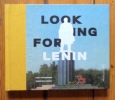152 books for « ackermann w »Edit
-
Type
Book (149)
Engraving (3)
-
Language
French (151)
German (1)
-
Century
19th (24)
20th (38)
21st (14)
-
Countries
Belgium (8)
Côte d'Ivoire (1)
Denmark (10)
France (73)
Switzerland (60)
-
Syndicate
CLAM (1)
ILAB (75)
NVVA (27)
SLACES (27)
SLAM (35)
Topics
- 1900 (1)
- Alps (1)
- Ampelography - wines (1)
- Architecture (1)
- Autographs (1)
- Aviation (8)
- Basel (1)
- Biography (2)
- Brazil (1)
- Christmas (1)
- Collaboration (2)
- Corbould (1)
- Decoration (3)
- Decorative arts (1)
- Dedication (2)
- Dentist (2)
- Dictionaries (2)
- Economics (2)
- Economics (1)
- England (1)
- English (1)
- Fine arts (3)
- Geneva (2)
- Geography (1)
- Germanic languages (3)
- Germany (1)
- Grammar (2)
- Hachette (1)
- Healthcare (1)
- Helvética (22)
- History (2)
- Humanitarian sciences (1)
- Israel (1)
- Italian (10)
- Italy (10)
- Journalism (2)
- Latin (1)
- Law (2)
- Linguistics (2)
- Literature (10)
- Logic (2)
- Mariology (1)
- Maritime law (1)
- Mathematics (8)
- Medicine (2)
- Numismatic (1)
- Nunnery (1)
- Odontology (1)
- Painting (1)
- pharmacy (1)
- Philosophy (5)
- Photography (5)
- Poetry (3)
- Religions (1)
- Romance languages (1)
- Rubber (1)
- Stomatology (2)
- Switzerland (27)
- Tales (1)
- Tea (2)
- Travel (1)
- Virgin mary (3)
- Wine (1)
Zum Hilbertschen Aufbau der reellen Zahlen. - [THE ACKERMANN FUNCTION - THE FIRST TOTAL COMPUTABLE FUNCTION]
Berlin, Julius Springer, 1928. 8vo. Without wrappers as extracted from ""Mathematische Annalen, 99. Band. 1928"". Pasted on backstrip in marbled paper. Internally fine and clean. Pp. 118-33
First printing of Ackermann's seminal paper in which the famous and exceedingly influential ""Ackermann Function"" was presented for the first time: ""One of the most important functions in computer science"". (Darling, The universal book of mathematics, p. 6)After Ackermann had published his function many mathematicians modified it and altered it to suit various purposes so that today ""the Ackermann function"" may refer to any of numerous variants of the original function.
Begründung des ""tertium non datur"" mittels der Hilbertschen Theorie der Widerspruchsfreiheit. - [ACKERMANN'S DISSERTATION]
Berlin, Julius Springer, 1925. In: 'Mathematische Annalen', volume 93, pp.1-36. Entire volume offered here (314 pp.) Bound in modern full cloth. Ex-library stamp on title page.
First edition of Ackermann's doctorial dissertation. Ackermann was a student of Hilbert and played an important role in the development of 20th century mathematical logic.
[Catalogue de la fabrique de porcelaines ACKERMANN et FRITZE] .
Volkstadt b. Rudolfstadt: , s.d. in-4 oblong. 47 planches représentant un millier de modèles (principalement des groupes) produits par cette fabrique, avec feuillets intercalaires indiquant les prix. Broché, couv. défraichie.
[Catalogue de la fabrique de porcelaines ACKERMANN et FRITZE] . (Volkstadt b. Rudolfstadt: Ackermann & Fritze , s.d. (c. 1900 ?)). [M.C.: arts décoratifs, faïence porcelaine, Allemagne]
Looking for Lenin.
Till Schaap Editions, 2016. In-8, cartonnage photographique, dos de toile. Un bijou, ici à l'état de neuf.
Préface de Myroslava Hartmond, traduite de l’anglais par Odile Demange. "Établis en Ukraine depuis plusieurs années, le photographe Niels Ackermann et le journaliste Sébastien Gobert posent un regard curieux sur l’histoire de ce pays. Depuis la révolution de Maïdan, le gouvernement ukrainien cherche à marquer, vingt-cinq ans après l’indépendance du pays, une rupture nette avec le passé soviétique, notamment en promulguant des lois de « décommunisation ». Les deux reporters sont partis à la recherche des marques tangibles de la période soviétique, sous son aspect le plus répandu et apparemment banal : les statues de Lénine. Celles-ci ont aujourd’hui entièrement disparu du paysage ukrainien. La scène est bien connue, répétée des dizaines et des centaines de fois depuis 1990 : la statue est jetée à terre par un gros véhicule, les grands-mères crient ou pleurent, les hommes fument, certains filment la scène. Mais que fait-on de la statue après sa chute ? Y a-t-il un cimetière prévu pour ce type d’objets emblématiques ? Le Lénine en miettes a-t-il une valeur au marché noir ? Que pensent les gens de cette destruction des symboles ? Dans leur enquête, Niels Ackermann et Sébastien Gobert découvrent des Lénine dans les endroits les plus improbables, jardins, décharges, couloirs de musées, salons de particuliers... Ils en ramènent plusieurs entretiens avec leurs gardiens ou propriétaires et de magnifiques images, loufoques ou décalées, parfois teintées de nostalgie. Certains Lénine sont reconstitués, d’autres customisés ou détournés – Dark Vador, cosaque ou homme-sandwich. Devenus objets du quotidien inoffensifs, on leur voue une forme de tendresse, ou une haine farouche : ils sont le signe d’un passé encombrant, dont il faut s’emparer pour inventer un avenir à l’Ukraine"
[Burney, Martin, Sharpe, Barrett, Landseer, Knight, Chishlome, Prout, Corbould, Purser, Stephanoff, Phillips, Westall, West.] - [ACKERMANN, Rudolf].
Reference : 933
(1831)
FORGET ME NOT, a christmas, new year’s and birth-day present.
— London : R. Ackermann (impr. Thomas Davison à Londres), 1831. In-12, 144 x 90 : frontispice, titre, ix, 386 pp., 13 planches. — Cartonnage d’éditeur vert, à la bradel, orné d’un décor gravé par Mitan différent sur les deux plats, dos lisse orné d’un décor gravé, tranches dorées, étui.
Charmant recueil de contes de noël en anglais, publié à l’initiative de Rudolf Ackermann (1764-1834). Imprimeur et marchand d’estampes britannique d’origine allemande, ce dernier est connu pour avoir inventé divers procédés d’impressions lithographiques en couleurs.On trouve dans ce keepsake des auteurs tels que : James Hogg (1770-1835) connu sous le nom du Bergé d’Ettrick (The Ettrick Shepherd) ; Thomas Haynes Bayly (1797-1839) ; Richard Polwhele (1760-1838) ; Susanna Strickland (1803-1885), William Lisle Bowles (1862-1850)…L’illustration se compose d’une gravure en relief (blanche sur fond ocre), d’un titre gravé et de 13 planches gravées par Chevalier, Finden, Agar, Freebairn, Graves, Shenton, Carter, Rolls, Marr, d’après des compositions de Burney, Martin, Sharpe, Barrett, Landseer, Knight, Chishlome, Prout, Corbould, Purser, Stephanoff, Phillips, Westall et West.Charmant exemplaire bien conservé malgré quelques frottements et un coup aux coins supérieurs. Etui abîmé avec fond manquant. Affiche librairie, Steinlen, Publicité
View of Brieg (Brig).
(London, R. Ackermann), 1818, 12.1x17.8 cm, orig. kolorierte Aquatinta / Aquatinte coloriée, 1 feuille.
Curieusement l’édition de Ackermann mentionnée par Mandach est datée 1820 (comme notre exemplaire (ref.: 86747), la planche offerte ici est datée ‘1818’, en plus les couleurs sont différentes. Mandach, Lory N° 180. Image disp.

(SLACES, NVVA)
Phone number : 41 (0)26 3223808
Grundzüge der Theoretischen Logik. (Die Grundlehren der Mathematischen Wissenshaften in Einzeldarstellungen, Band XXVII).
Berlin, Julius Springer, 1928. 8vo. Publisher's full cloth. Ink signature of Samuel Skulsky on front free end paper. Completely clean throughout. A fine and tight copy.
First edition of the foundation of modern mathematical logic.In the years 1917-22 Hilbert gave three seminal courses at the Univeristy og Göttingen on logic and the foundation of mathematics. He received considerable help in preperation and eventual write up of these lectures from Bernays. This material was subsequently reworked by Ackermann into the monograph 'Grundzüge der Theoretischen Logik' (the offered item). It containes the first exposition ever of first-order logic and poses the problem of its completeness and the decision problem ('Entscheidungsproblem'). The first of these questions was answered just a year later by Kurt Gödel in his doctorial dissertation 'Die Vollständigkeit der Axiome des logischen Funktionenkalküls'. This result is known as Gödel's completeness theorem. Two years later Gödel published his famous 1931 paper 'Über formal unentscheidbare Sätze der Principia Mathematica und verwandter Systeme I' in which he showed that a stronger logic, capable of modeling arithmetic, is either incomplete or inconsistent (Gödel's second incompleteness theorem). The later question posed by Hilbert and Ackermann regarding the decision problem was answered in 1936 independantly by Alonzo Church and Allan Turing. Church used his model the lambda-calculus and Turing his machine model to construct undecidable problems and show that the decision problem is unsolvable in first-order logic. These results by Gödel, Church, and Turing rank amongst the most important contributions to mathematical logic ever. Scarce in this condition.
HILBERT, D. UND W. ACKERMANN. - THE FOUNDATION OF MODERN MATHEMATICAL LOGIC.
Reference : 46101
(1928)
Grundzüge der theoretischen Logik.
Berlin, Springer, 1928. Orig. full cloth. Lower part of spine with loss of cloth. Lower right cornerof titlepage cut away, no loss of letters. VIII,120 pp.
First edition. (Die Grundlehren der Mathematischen Wissenshaften in Einzeldarstellungen, Band XXVII). In the years 1917-22 Hilbert gave three seminal courses at the Univeristy og Göttingen on logic and the foundation of mathematics. He received considerable help in preperation and eventual write up of these lectures from Bernays. This material was subsequently reworked by Ackermann into the monograph 'Grundzüge der Theoretischen Logik' (the offered item). It containes the first exposition ever of first-order logic and poses the problem of its completeness and the decision problem ('Entscheidungsproblem'). The first of these questions was answered just a year later by Kurt Gödel in his doctorial dissertation 'Die Vollständigkeit der Axiome des logischen Funktionenkalküls'. This result is known as Gödel's completeness theorem. Two years later Gödel published his famous 1931 paper 'Über formal unentscheidbare Sätze der Principia Mathematica und verwandter Systeme I' in which he showed that a stronger logic, capable of modeling arithmetic, is either incomplete or inconsistent (Gödel's second incompleteness theorem). The later question posed by Hilbert and Ackermann regarding the decision problem was answered in 1936 independantly by Alonzo Church and Allan Turing. Church used his model the lambda-calculus and Turing his machine model to construct undecidable problems and show that the decision problem is unsolvable in first-order logic. These results by Gödel, Church, and Turing rank amongst the most important contributions to mathematical logic ever.
HILBERT, D. UND W. ACKERMANN. - THE FOUNDATION OF MODERN MATHEMATICAL LOGIC.
Reference : 49908
(1928)
Grundzüge der theoretischen Logik.
Berlin, Springer, 1928. 8vo. Uncut in orig. printed wrappers. VIII,120. With the name of Bent Schultzer (Former Danish professor in philosophy) on first leaf. Internally clean.
First edition. (Die Grundlehren der Mathematischen Wissenshaften in Einzeldarstellungen, Band XXVII). In the years 1917-22 Hilbert gave three seminal courses at the Univeristy og Göttingen on logic and the foundation of mathematics. He received considerable help in preperation and eventual write up of these lectures from Bernays. This material was subsequently reworked by Ackermann into the monograph 'Grundzüge der Theoretischen Logik' (the offered item). It containes the first exposition ever of first-order logic and poses the problem of its completeness and the decision problem ('Entscheidungsproblem'). The first of these questions was answered just a year later by Kurt Gödel in his doctorial dissertation 'Die Vollständigkeit der Axiome des logischen Funktionenkalküls'. This result is known as Gödel's completeness theorem. Two years later Gödel published his famous 1931 paper 'Über formal unentscheidbare Sätze der Principia Mathematica und verwandter Systeme I' in which he showed that a stronger logic, capable of modeling arithmetic, is either incomplete or inconsistent (Gödel's second incompleteness theorem). The later question posed by Hilbert and Ackermann regarding the decision problem was answered in 1936 independantly by Alonzo Church and Allan Turing. Church used his model the lambda-calculus and Turing his machine model to construct undecidable problems and show that the decision problem is unsolvable in first-order logic. These results by Gödel, Church, and Turing rank amongst the most important contributions to mathematical logic ever.
[JEU] Mensch ärgere dich nicht ! Ne te fâche jamais !.
Wissembourg, Imagerie Alsacienne R. Ackermann Wissembourg, succr. de F.C. Wentzel, [circa 1910]. 363 x 301 mm.
Jeu en allemand et en français, lithographié en couleurs. Le jeu "Mensch ärgere dich nicht", en français "Ne vous fâchez pas" ou "T'en fais pas" est un jeu dont le titre même s'attaque à la colère que peuvent provoquer les jeux de société. Le principe est simple : le premier joueur à déplacer toutes ses pièces de l'autre côté du plateau gagne. Le jeu a été inventé entre 1907 et 1908 par l'allemand Josef Friedrich Schmidt. Bel exemplaire.
![[JEU] Mensch ärgere dich nicht ! Ne te fâche jamais !.. ACKERMANN (René).](https://static.livre-rare-book.com/pictures/LBW/lbw-8538_1_thumb.jpg)
[JEU de l'OIE] Gänse-Spiel.
Wissembourg, Imagerie Alsacienne R. Ackermann Wissembourg, succr. de F.C. Wentzel, [circa 1890]. 303 x 389 mm.
Jeu de l'oie en langue allemande, lithographié en couleurs, composé de 63 cases numérotées. Les règles du jeu sont données au centre du jeu. Les coins sont illustrés de scènes d'enfants. Bel exemplaire. The Journal of American Folk-Lore, The Game of Goose, Volume VIII, April-June 1895, n° XXIX, 1895, p. 148.
![[JEU de l'OIE] Gänse-Spiel.. ACKERMANN (René).](https://static.livre-rare-book.com/pictures/LBW/lbw-8532_1_thumb.jpg)
[JEU de l'OIE] Neues Hintz- und Peter-Spiel.
Wissembourg, Imagerie Alsacienne R. Ackermann Wissembourg, succr. de F.C. Wentzel, [circa 1890]. 370 x 300 mm.
Jeu de l'oie en langue allemande, lithographié en couleurs, composé de 85 cases de quatre couleurs. La dernière case au centre représente les deux personnages Hintz et Peter avec le commentaire "Bravo ! Le gros lot a été remporté !". Les règles du jeu sont données au bas du jeu. Bel exemplaire. The Journal of American Folk-Lore, The Game of Goose, Volume VIII, April-June 1895, n° XXIX, 1895, p. 148.
![[JEU de l'OIE] Neues Hintz- und Peter-Spiel.. ACKERMANN (René).](https://static.livre-rare-book.com/pictures/LBW/lbw-8530_1_thumb.jpg)
Masculins singuliers Enquête sur la nouvelle identité des hommes
2009 Paris, Editions Robert Laffont, 2009 13,5 x 21,5 cm, 154 pp, broché, couverture souple illustrée, état neuf,
dédicace de l'auteur en page 5.
Poésies : Premières poésies, Poésies philosophiques.
Paris Lemerre 1874 1 vol. relié in-12, demi-basane cerise, dos à nerfs orné d'un fleuron doré, couverture conservée, 154 pp. Troisième édition. Petites rousseurs éparses. Bon état.
Textfunktion und bild in Genreszenen der niederländischen Graphik des 17, Jahrhunderts.
Bonn, Verlag und Datenbank fur Geisteswissenschaften, 1993 Paperback, original buchcover, 260 pp., abbildungen in schwarz und weiss, 21x30 cm. ISBN 9783929742244.
Contes et Poésies [ Livre dédicacé par l'auteur ]
1 vol. in-12 br., Librairie de L. Hachette et Cie, Paris, 1863, 299-8 pp.
Envoi de Louise Ackermann "à Monsieur Louis Vollot, témoignage de sympathie".Etat très satisfaisant (dos frotté, qq. mouill.).
Bibel-Atlas, nach den neuesten und besten Hülfsmitteln gezeichnet, und erläutert von C. Ackermann.
Weimar, Geograph. Institut, 1832, gr. in-8°, VI, schöne gestoch. Ansicht von Jerusalem auf dem Titel + 78 S., unaufgeschnitten + 12 Kupfer-Karten davon 6 Karten mit kolorierten Umrissen, leicht stockfleckig, Original-Broschüre, Textblätter und Umschlag etwas gebräunt.
Die Karten stellen dar: 1) Die alte Welt. / 2) Länder die in der Geschichte Noachs, Abrahams und der Israel. Könige erwähnt werden. / 3) Canaan nach der Genesis. / 4) Aegypten. 5) Reiseweg der Israeliten von Aegypten nach Canaan. / 6) Canaan nach der Vertheilung unter die 12 Stämme. ... / 7) Ausdehnung des jüdischen Gebiets unter David und Salomo. / 8) Juda und Israël nach den Büchern der Könige. / 9) Palaestina oder Canaan. / 10) Plan vom alten Jerusalem. / 11) Reisen Jesu in Palaestina. / 12) Reisen des Paulus.

(SLACES, NVVA)
Phone number : 41 (0)26 3223808
Cascade de Pissevache, camino de Simplon.
(London, R. Ackermann- Spanish edition), 1820, 12.1x17.8 cm, orig. kolorierte Aquatinta / Aquatinte coloriée, 1 feuille.
Mandach, Lory N° 177. Image disp.

(SLACES, NVVA)
Phone number : 41 (0)26 3223808
View of the bridge of Baveno, & of the Madre Islands.
(London, R. Ackermann), 1820, 12.1x17.8 cm, (vue), orig. kolorierte Aquatinta / Aquatinte coloriée, 1 feuille.
Mandach, Lory N° Image disp.

(SLACES, NVVA)
Phone number : 41 (0)26 3223808
View of the Glacier of Roselouvi
(London, R. Ackermann), 1820, 12.1x17.8 cm, (vue), orig. kolorierte Aquatinta in d. Marge oben Rechts Pl. 26Vol XIII. 1 feuille.
Mandach, Lory N° Image disp.

(SLACES, NVVA)
Phone number : 41 (0)26 3223808
View of the Gallery & Bridge of the Ganther.
(London, R. Ackermann), s.d., 1818, 12.1x17.8 cm, orig. kolorierte Aquatinta / Aquatinte coloriée, 1 feuille.
Provenant d’une édition datée 1818. Mandach, Lory N° 181. Image disp.

(SLACES, NVVA)
Phone number : 41 (0)26 3223808
View of the Site of the Monastery of the Simplon, & of Mont Rosa.
(London, R. Ackermann), s.d., 1818, 12.1x17.8 cm, orig. kolorierte Aquatinta / Aquatinte coloriée, 1 feuille.
Provenant d’une édition datée 1818. Mandach, Lory N° 185. Image disp.

(SLACES, NVVA)
Phone number : 41 (0)26 3223808
View of the Gallery of Issel.
(London, R. Ackermann), 1820, 12.1x17.8 cm, orig. kolorierte Aquatinta / Aquatinte coloriée, sans marges, 1 feuille.
Mandach, Lory N° 185. Image disp.

(SLACES, NVVA)
Phone number : 41 (0)26 3223808
View of the Gallery & Bridge of the Ganther.
(London, R. Ackermann), 1820,, 12.1x17.8 cm, orig. kolorierte Aquatinta / Aquatinte coloriée, 1 feuille.
Mandach, Lory N° 181. Image disp.

(SLACES, NVVA)
Phone number : 41 (0)26 3223808
View from the entrance of the Gallery of Schalbet (from the Swiss side).
(London, R. Ackermann), 1820, 12.1x17.8 cm, orig. kolorierte Aquatinta / Aquatinte coloriée, 1 feuille.
Mandach, Lory N° 183. Image disp.

(SLACES, NVVA)
Phone number : 41 (0)26 3223808
 Write to the booksellers
Write to the booksellers


![FORGET ME NOT, a christmas, new year’s and birth-day present.. [ACKERMANN, Rudolf].](https://static.livre-rare-book.com/pictures/BUS/933_1_thumb.jpg)

![[JEU] Mensch ärgere dich nicht ! Ne te fâche jamais !.. ACKERMANN (René).](https://static.livre-rare-book.com/pictures/LBW/lbw-8538_1.jpg)
![[JEU de l'OIE] Gänse-Spiel.. ACKERMANN (René).](https://static.livre-rare-book.com/pictures/LBW/lbw-8532_1.jpg)
![[JEU de l'OIE] Neues Hintz- und Peter-Spiel.. ACKERMANN (René).](https://static.livre-rare-book.com/pictures/LBW/lbw-8530_1.jpg)

![Contes et Poésies [ Livre dédicacé par l'auteur ]. ACKERMANN, Louise](https://static.livre-rare-book.com/pictures/CDL/61324_thumb.jpg)
![Contes et Poésies [ Livre dédicacé par l'auteur ]. ACKERMANN, Louise](https://static.livre-rare-book.com/pictures/CDL/61324_2_thumb.jpg)
![Contes et Poésies [ Livre dédicacé par l'auteur ]. ACKERMANN, Louise](https://static.livre-rare-book.com/pictures/CDL/61324_3_thumb.jpg)

